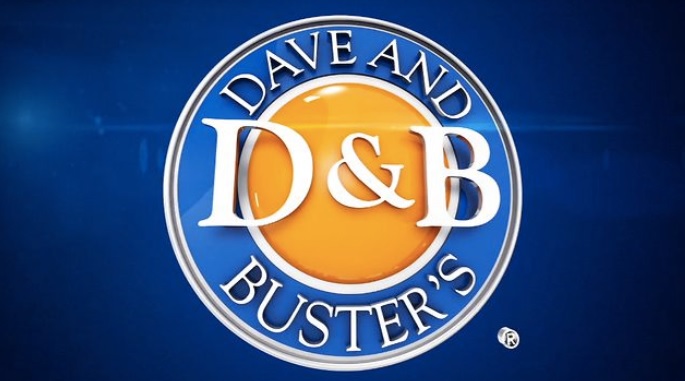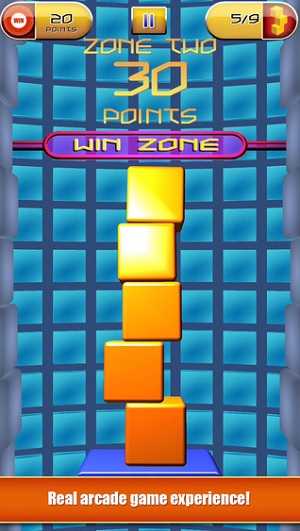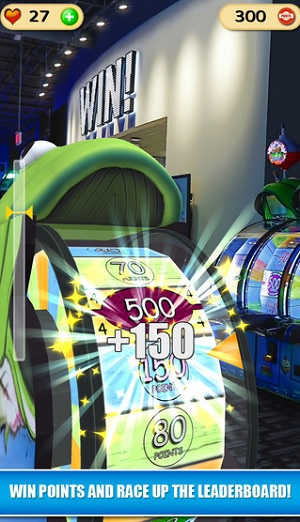GamesBeat: How many of these cards are out there? Did you have to change the cards with the infrastructure?
Bachus: Not at all. Last year alone we issued 10 million Power Cards. Most of our customers — unfortunately, I would say, because I’d love to be able to track their history between – come in, buy a Power Card, put some money on it, play until it’s out, bundle up their tickets, find a prize, and then leave. They probably have a sock drawer full of cards, if they’re anything like me. The next time they come back, they forgot their card, so they buy a new one and the cycle repeats.
The only thing we had to do is expose an API that would allow us to apply tickets to the Power Card through our servers without coming through a physical arcade game. We’re working with James Gwertzman’s company, PlayFab. They’re doing all the backend service stuff. I want to put together game servers to track virtual currency and things like that. We expose an API from our internal servers that PlayFab’s servers can talk to. That’s how we handle the transactions.
GamesBeat: It seems like part of the big deal here would be the retention you can get with these people who have the Power Cards. You can have them come back and boost the restaurants.
Bachus: Exactly right. I’m in a very comfortable position, because this isn’t a promotional game. I spent a lot of time and a lot of effort trying to make sure that these were quality games. But I don’t need them to, on their own, generate the revenue to pay for their development costs. If I can get somebody to think about Dave & Busters more frequently, I believe they’ll be more inclined to come into the restaurant.
The biggest challenge we have is just that there are so many entertainment options out there. Getting somebody to think of us when they’re trying to decide what to do is a huge challenge. If they happen to love Speed of Light and they’re playing it and see our logo, maybe they think, “Hey, I could take the family to Dave & Busters this weekend.” Or if they win 1,000 tickets, they have to come in to the store to redeem them. Hopefully they’ll think, “Maybe I’ll buy a Power Card and play some games and see if I can make that 2,000 tickets.” Maybe they’ll buy a burger and a tiki drink and make a night of it. If we can get people to come to us more frequently, that’s a huge win for us.
GamesBeat: Do you have a way to measure that kind of retention?
Bachus: Sort of. In the past it’s been challenging because the cards are disposable. We do have a loyalty program with a few million people, but that pales in comparison to the total number of visitors we have. One of the pieces of the loyalty program is registering your Power Card. If you ever lose it we can find it for you and regain some discounts and things like that. But if you buy a new Power Card every time you come in, you’re a whole new person to us. We don’t know who you are.
Hopefully that will change over time. People will start hanging on to these cards as we enable RFID and take advantage of smartphone capabilities. We may be able to track that behavior for more than just the people who are the regulars in the loyalty program. It’s going to be a little challenging. But one thing I’m hopeful about is that if you do now have your primary card and we’re loading tickets onto it all the time while you play the games, you’ll bring that card back. We’ll be able to understand how frequently these guys come in, because they’re using the same card.
That’s probably the biggest difference between the way we measure success and the way a normal app developer would. We’ll look at all the usual key performance indicators like numbers of downloads and daily active users and monthly active users and play time. But then we overlay the other piece, which is store visits.
GamesBeat: The number of games that you’re starting with, how did you arrive there? Do you feel like you’re going to have a whole slate coming with more stuff?
Bachus: We started with these because these are probably our three most popular, best-known games, at least among the ones that are original to the arcade industry as opposed to based on licenses. We wanted to see how the guests would respond to it. We don’t know. I hope they’ll love it and play it and download it and recommend it to their friends. But we don’t know.
This was enough that there’s some variety. All three games are very different, but all three will be equally appealing – potentially more appealing to some than others. We’ll see how that goes. It’s absolutely my intention, if this resonates with our customers, to do more of them. I’d like to do at least another three or four before the end of the year. We’ll keep our eye on how people respond. We’re very lucky. There’s a long list of games that we could reimagine into mobile apps. We have plenty of supply and we’re working with a couple of great developers here. We’d like to keep working with them. It just comes down to how people take to it.
GamesBeat: Are they free-to-play?
Bachus: Yeah, they’re freemium. I did add a couple of in-app purchase opportunities. They’re hopefully not as irritating as in some freemium games. They’re more additive. If we can generate P&L off the games themselves, that’s interesting to me. I want to understand how that works. But they’re absolutely free to download and play.
GamesBeat: How are you promoting these? If you’re advertising the restaurant, are you also going to advertise the games in those instances?
Bachus: We are. We’re tagging some of our TV spots with information about the games. We’re also doing a lot of in-store promotion. The marketing guys have come up with a really cool banner that goes over the exits and says, “Hey, take these games home with you.” We’re doing stuff on the games themselves, for people who are particularly inclined to one or the other. We’re hitting our loyalty program pretty hard. We have a database of people who follow us for promotions and offers. Another reason why I wanted to use existing, known properties from our stores is that I feel like it’s a lot easier to leverage the assets we have. We’re about to open our 77th store in North America. We have lots of people who go through there. We have a lot of great team members in those stores who can talk up the games. You don’t have that if you’re an isolated app developer. Why not take advantage of it?
GamesBeat: The intersection of digital mobile games and physical seems to be an interesting frontier.
Bachus: It’s fascinating. My biggest disappointment so far is how far behind our industry is when it comes to networking. That’s my crusade. I’ve been on it now for two and a half years. I’m making a bit of progress, but not as much as I’d like. The one thing that’s missing here is, there’s no connection between the apps and the arcade games themselves. Historically, these operations have not been online. In Japan, their arcade business is light years beyond us in that area.
I think it comes back, again, to the redemption thing. 10 or 15 years ago, after the revitalization of arcades that was brought on by fighting games like Street Fighter, the arcade businesses in Japan and the U.S. both started to decline. The U.S. pulled out of it by discovering redemption games. That changed everything. Right now, about 83 percent of our games revenue comes from redemption games. If you look at the time people spend, it’s more even, but the vast majority of the revenue comes from redemption.
The games are very easy. They have very broad appeal. It’s a unique proposition. I’m fond of saying that no matter how much you like playing your Xbox, you’re never going to win an iPad at it. That changes the complexion. We bring in a much more casual, much broader audience, but because they’re casual, they’re not very frequent visitors.
Japan is the exact opposite, because redemption games are illegal in Japan outside of pachinko and slot parlors. If you go to a typical arcade in Japan, it’s just for entertainment. As a result, the games over there are much more sophisticated, much more complex, and use a lot of network capabilities. They cater to a much smaller audience, but a much more dedicated one. It’s like the console business was 15 years ago. You have a small number of people, the core players.
It’s kind of six of one, half a dozen of the other. They have a small number of very frequent players. We have a much larger number of relatively casual players. That’s why networking is so important over there. But over here, although we represent something like a third of total industry revenues, for a game manufacturer, we’re lucky if we’re maybe five percent of their revenues. We have 77 locations, but there are something like 6,000 locations in the U.S. overall that have coin-op amusement games.
We’re an important customer, a kind of showcase customer, but we’re not a large volume customer compared to the entire industry. That’s why this larger number of locations that don’t have internet connections and don’t care about maintaining a relationship with their customers—It’s the lobby of a movie theater or a pizza parlor or something like that. They’ve never invested in networking infrastructure. I think that’s the next frontier for our industry. If we can start to integrate Xbox Live-style networking functionality into these arcades and integrate them with mobile apps, that’s going to transform the industry. We’ll see an explosion. People are starting to realize that the classic notion of arcades is dead, but what we offer is social entertainment. It’s the ability to go out. Dave & Busters is still around after 32 years, I think, because you go out with your friends and you have a meal, buy a drink, play some games, have another drink. It’s just a good way to interact with other people, compared to going to a movie where you sit in silence for two hours. Adding networked features makes that even more interesting. We’re going there, but it’s going slowly, much more slowly than I would have liked or expected.
GamesBeat: It sounds like a lot of other non-game mobile apps are heading the way you are, with the interaction between a mobile app and something physical.
Bachus: Exactly, the internet of things and all that. It’s very on point. But there’s a lot of moving pieces in our industry. We’re now reaching a point where the network connection isn’t a problem. The challenge will be the business model.
In Japan, again, you buy the hardware and pay for the service, kind of like you do with a personal computer. Operators here aren’t used to that. They’re used to buying furniture. I buy a Big Bass Fishing cabinet for however many thousand dollars and I own it. Whatever it generates goes in my pocket. The idea of paying for ongoing content updates or services or that sort of thing is a tough sell, because it’s never been part of the business. My guess is, much like anything, if we see a big hit and people say, “Wow, this thing is generating tons of money because of the network features,” you’ll see a rush to generate connected coin-op games.
VentureBeat's mission is to be a digital town square for technical decision-makers to gain knowledge about transformative enterprise technology and transact. Learn More






